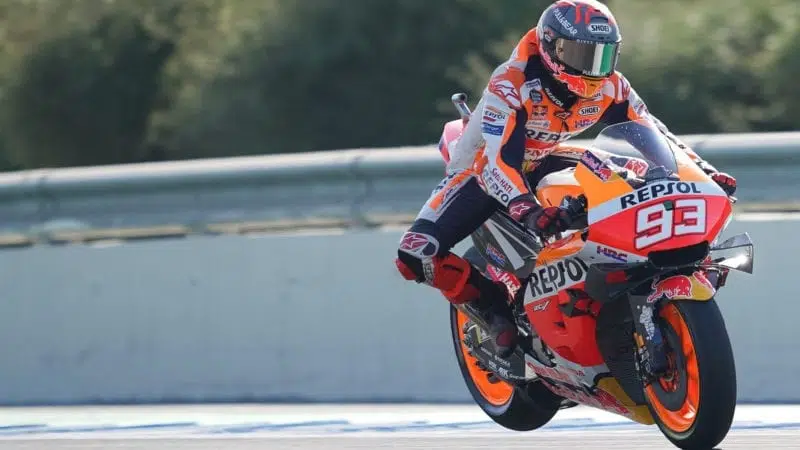In the high-speed, adrenaline-fueled world of MotoGP racing, understanding the impact of G-forces is crucial for both riders and engineers. G-forces, or gravitational forces, play a pivotal role in the dynamics of racing, affecting everything from rider endurance to bike design. This article will explore the multifaceted impact of G-forces in MotoGP racing, shedding light on how they influence the sport and the athletes who compete at its highest level.
10. The Basics of G-Forces in MotoGP Racing
G-forces represent the acceleration or deceleration forces acting on a rider’s body, directly proportional to the speed and the rate of change in velocity. In MotoGP, these forces can reach up to 1.5 Gs in acceleration and over 5 Gs in braking and cornering. Understanding these forces is essential for optimizing bike performance and rider safety. High G-forces demand advanced aerodynamics, tire grip, and rider fitness to manage the physical demands of racing at top speeds.
9. Physiological Effects on Riders
The impact of G-forces in MotoGP racing extends beyond the mechanical to the physiological, significantly influencing rider performance. Sustained exposure to high G-forces can lead to muscle fatigue, impaired vision, and decreased reaction times. Riders must undergo rigorous physical training, focusing on core strength, cardiovascular fitness, and neck muscles to withstand the forces experienced during a race, ensuring peak performance and reducing the risk of injury.
8. Aerodynamic Design and G-Forces
Aerodynamic design plays a pivotal role in managing the impact of G-forces in MotoGP racing. By optimizing the bike’s shape and the rider’s position, teams can reduce drag and improve stability, allowing for higher speeds and more effective handling of G-forces during acceleration, braking, and cornering. Advanced materials and design techniques are employed to create aerodynamically efficient motorcycles that can better withstand the pressures of high-speed racing.
7. Impact on Motorcycle Tires
Tires are the sole contact point between the motorcycle and the track, bearing the brunt of G-forces in MotoGP racing. The design and compound of the tires must be carefully selected to manage these forces, ensuring optimal grip, durability, and performance throughout a race. Tire manufacturers continuously innovate, developing compounds and tread patterns that can withstand extreme forces while providing the necessary traction for acceleration, braking, and cornering.
Read More: Top 10 Worst Crashes in MotoGP History
6. Rider Technique and G-Force Management
Effective management of G-forces in MotoGP racing also depends on the rider’s technique. Skillful braking, precise throttle control, and optimal body positioning are critical for minimizing the negative effects of G-forces on performance. Riders practice and refine their techniques to maintain control and stability at high speeds, leveraging their understanding of G-forces to gain a competitive edge.
5. G-Forces and Bike Suspension
The suspension system of a MotoGP bike is finely tuned to absorb and manage the impact of G-forces, ensuring optimal contact with the track surface. Adjustments to the suspension settings can significantly affect how a motorcycle handles G-forces during acceleration, braking, and cornering. Teams and riders work closely to fine-tune their suspension setups, seeking the perfect balance between stability and agility.
4. Training and Simulation for G-Force Adaptation
Riders use advanced training methods and simulation technology to adapt to the impact of G-forces in MotoGP racing. High-tech simulators replicate the physical demands of riding at high speeds, allowing riders to acclimate to the G-forces encountered on the track. This preparation is crucial for enhancing endurance, improving reaction times, and reducing the risk of G-force-induced fatigue during races.
3. G-Forces and Race Strategy
Race strategy in MotoGP must account for the impact of G-forces, influencing decisions on tire selection, fuel load, and pacing. Teams analyze data on G-force effects to optimize their strategies, aiming to maintain high performance while managing the physical demands on the rider and the mechanical stresses on the motorcycle. Strategic planning includes anticipating how G-forces will affect the bike and rider throughout the race, particularly in the final laps when fatigue can be a deciding factor.
2. Innovations to Mitigate G-Force Impact
The quest to mitigate the impact of G-forces in MotoGP racing drives technological and material innovations. From advancements in protective gear that absorb and distribute forces, to the development of more resilient and responsive motorcycle components, the industry continuously evolves. These innovations not only enhance performance but also improve safety, allowing riders to push the limits of speed and agility with greater confidence.
Read More: Top 10 Best MotoGP Races of All Time
1. The Future of G-Forces in MotoGP Racing
As MotoGP continues to evolve, the impact of G-forces remains a central concern. Ongoing research and development efforts are focused on better understanding these forces and their effects on both riders and machines. Future advancements in materials science, aerodynamics, and biomechanics promise to further enhance the ability of teams and riders to manage G-forces, potentially leading to even higher speeds and more thrilling races.
Conclusion
The impact of G-forces in MotoGP racing is a complex interplay of physics, physiology, and technology. Understanding and managing these forces are critical for success in the sport, demanding continuous innovation and adaptation from teams and riders alike. As MotoGP races into the future, the pursuit of speed will always be balanced by the challenges and opportunities presented by G-forces, ensuring the sport remains on the cutting edge of motorsport technology and human performance.




